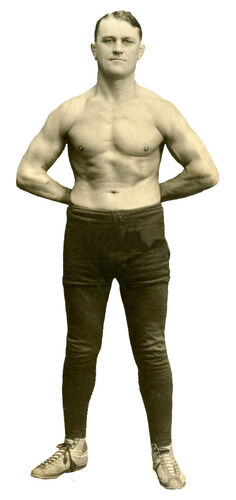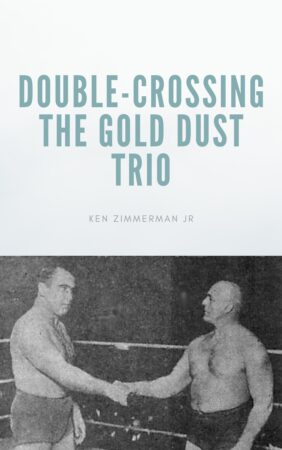Pesek Goes Into Business for Himself
John “Tigerman” Pesek wrestled several “shoot” matches during the “worked” era of the 1920s. By this time, American professional wrestlers cooperated with each other to put on exciting matches for the fans. Results were predetermined by promoters and managers. Legitimate contests or “shoots” were rare. When they did occur, it was normally to settle a dispute among promoters or a double-cross.

Photo of John Pesek from the Public Domain
Pesek stood out for his wrestling skills. Considered a “hooker”, a skilled submission wrestler, Pesek was on a par with legitimate wrestlers Joe Stecher and Ed “Strangler” Lewis. Promoters frequently called on Pesek to wrestle legitimate contests against a rival promoters top wrestler. Pesek jumped at the chance to have a contest.
Pesek wrestled legitimate contests with Marin Plestina and U.S. Olympic wrestler Nat Pendelton in the early 1920s. Pesek was the underdog in both matches.
Against Plestina, Pesek lost by disqualification but so dominated Plestina that his claim to be the “real” world champion was exposed as a promotional charade.
Pesek defeated Pendleton after injuring him during the match. Pendleton wrestled for a few more months before leaving pro wrestling for a Hollywood career.
By 1926, Pesek was wrestling “worked” matches with the top wrestlers in the country. On October 6, 1926, Pesek pursued a course of action during a match in Los Angeles, which adversely affected his ability to be booked by wrestling promoters for the rest of his career.
Pesek wrestled current World Heavyweight Wrestling Champion Joe Stecher several time earlier in 1926. Stecher won the matches without incident although he always dropped a fall to Pesek to make him look strong.
The Los Angeles match was following the same pattern as previous bouts. Both Stecher and Pesek had won a fall. The match would be won in the third and deciding fall.
Prior to this match, all of Pesek’s shooting had been sanctioned by the promoters, who hired him to wrestle Plestina and Pendleton. In this match, he was expected to drop the third fall to Stecher. Pesek had other plans.

Joe Stecher with his championship belt (Public Domain)
As they began the third fall, Pesek immediately secured a wristlock and head scissors. The move seemed to surprise Joe Stecher.
The wristlock can legitimately break an opponent’s arm. Realizing his predicament and trying to avoid injury, Stecher rolled to his back. The fans gasped as they realized Pesek had so quickly gained the third fall. The referee signaled for Pesek to release the hold. Pesek stood to his feet to claim the world championship.
The crowd started to stir as Stecher visibly wept in the ring. The official shocked both wrestlers and the crowd though, when he ruled the head scissors to be an illegal choke. He awarded the third fall to Joe Stecher on a disqualification. Stecher was still the world champion.
The crowd reeled from the second shock for a few moments but then began throwing seat cushions and bottles at the official. Police had to escort him out of the arena before the enraged crowd beat him unmercifully for the obvious bogus decision. Stecher and Pesek, both visibly shaken, returned to their dressing rooms.
If the situation had been a planned angle, it would probably have built to a huge rematch. Pesek’s decision to shoot on Stecher would prevent him from gaining another title shot. The result was terrible for both wrestlers and the sport.
Pesek had trouble even being booked on a wrestling card after this match. After realizing his situation wasn’t going to change, Pesek began breeding greyhound racing dogs. He wrestled only occasionally for the remainder of his career.
Stecher, who was arguably the second greatest wrestler of the era after being surpassed by Ed “Strangler” Lewis, was shaken he couldn’t get out of the hold. This embarrassment and his reaction may have been the first hints of mental health issues, which would dog him for the last 30 years of his life.
Wrestling took a big hit because the referee’s bogus decision to keep the title on Stecher exposed the “worked” nature of pro wrestling. The scandal was covered in all the major newspapers. This kind of exposure always hurt wrestling as crowds would be down for several months or longer after such a scandal. Ironically, a “shoot’ hurt the credibility of wrestling in this case. No one won in this fiasco.
You can leave a comment or ask a question about this or any post in the comment section below or on my Facebook page or Twitter profile.
Source: St. Louis Star and Times, October 7, 1926 edition, p. 16
Pin It

